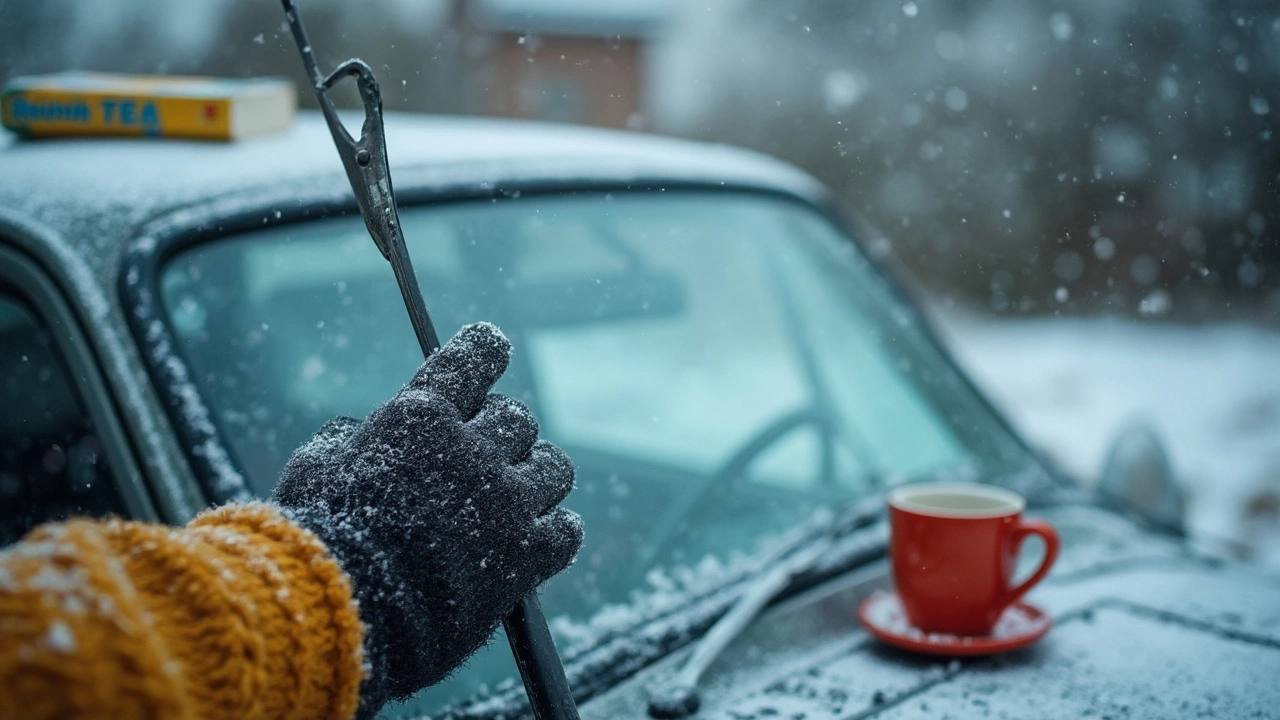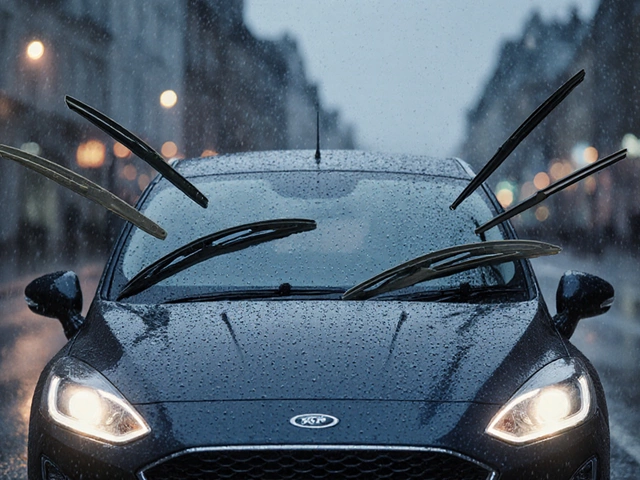Ever walked through a parking lot on a freezing morning and noticed a bunch of cars with their windshield wipers sticking up like weird antennae? You might wonder if that's actually smart—or if it's just something people do without thinking about it.
This move is supposed to keep your wipers from freezing to the glass. But here’s the thing: not everyone agrees it’s a good habit. Some mechanics swear by it, others say it does more harm than good.
So before you follow the crowd, let’s break down whether putting your wipers up is a hack or just hype. You’ll get clear tips so you can decide what’s best for your own car—without wrecking your wiper blades or making life harder during your morning commute.
- Why People Put Their Windshield Wipers Up
- The Risks of Lifting Wipers
- When It Actually Makes Sense
- Tips for Caring for Wipers Year-Round
Why People Put Their Windshield Wipers Up
This move isn’t just some random winter ritual. It all started because drivers wanted to stop their windshield wipers from freezing to the glass during icy weather. You know how in cold mornings, your wipers seem glued to the windshield? People figure lifting them up helps avoid that hassle.
Here’s what’s going on: when snow or freezing rain coats your windshield, the moisture can freeze your wiper blades right to the glass. Trying to peel them off before work can rip the rubber or mess with the wiper arm. Replacing wiper blades isn’t always cheap, especially if you just bought a good pair.
Plenty of folks think that by flipping their wiper blades up, they’re making it easier to clear off snow or scrape ice—there’s nothing blocking the windshield, and the blades don’t get damaged pulling them free. Some mechanics—especially in places like Minnesota or Canada—admit it absolutely beats cracking frozen wipers when you’re in a hurry.
Then there’s the car myths. Somewhere along the line, this habit got tied to better winter car care and avoiding buying new blades every year. People compare notes in the office parking lot. “Did you see who remembered to lift their wipers last night?” Everyone acts like it’s the new secret weapon against winter headaches.
- Prevents wipers from sticking to ice or frost
- Makes it easier to clean your windshield
- Reduces the chance you’ll tear the rubber when it’s frozen down
- Saves time scraping on super cold mornings
Truth is, putting your wipers up won’t magically protect your car, but the basics behind it do make sense for daily drivers who park outside overnight. Still, it’s worth looking at the flip side before making it your go-to move every winter.
The Risks of Lifting Wipers
It might seem harmless to put your windshield wipers up, but there are a couple of downsides most drivers don’t think about. For starters, wipers are designed to rest flat against your windshield. When you leave them standing straight up, all the tension sits on the base and the spring-loaded arm, not the blade. That extra pressure can weaken those parts over time, especially if it’s windy.
Here’s another thing you won’t hear at the auto parts store: lifted wipers are more likely to snap back down if someone bumps them or the wind blows hard. That can crack the windshield or dent the hood, and both are much pricier fixes than a frozen blade. According to a 2023 insurance report, windshield cracks from wiper arms cost drivers over $500 on average.
There’s also the problem of plastics and rubbers getting brittle in freezing weather. When wipers sit raised overnight, the plastic arm hinges and rubber blade edges get exposed to cold air and ice on all sides, not just one. That exposure can shorten the life of your wiper blades faster than just leaving them down.
“We see more damage to wiper arms and windshields in winter from people popping them up than from blades sticking to the glass,” says Mark D’Angelo, service manager at City Motors Garage.
Finally, most car manuals don’t actually recommend this move. And on some cars, especially ones with special wipers or heated windshields, propping the wipers up could go against the design and void your warranty.
- You’ll expose wiper arms and blades to more stress and potential breakage.
- Risks of the spring mechanism wearing out or popping unexpectedly go way up.
- Cold plastic and rubber get brittle, causing the blades to crack faster.
- If a wiper falls or gets hit, it could chip your windshield or paintwork.
It comes down to this: lifting your windscreen wipers protects against one problem—frozen blades—but creates a few others you might not expect. If you park somewhere super windy, or your wipers are a pain to replace, maybe think twice before you pop them up every snowstorm.

When It Actually Makes Sense
Some situations do call for putting your windshield wipers up. If a snowstorm or ice is heading your way and you have to park outside, lifting your wipers can actually protect them from getting stuck to the glass. When wiper blades freeze to the windshield, you might end up tearing the rubber or even burning out the wiper motor when you flip them on.
Here's when it really pays off to lift your wipers:
- Your car sits outside overnight and it’s going to snow or freeze hard before morning.
- You don’t plan on cleaning your windshield right away and want to avoid chipping away at stuck blades.
- You use aftermarket or performance wiper blades with delicate, expensive rubber that can stick and rip in ice.
But this isn’t a year-round thing—it’s really just a play for tough winter weather. If you live in a place where snow and freezing rain are common, lifting wipers can help you out a few times each season and potentially save you the trouble of replacing your wiper blades sooner than expected.
Here’s a quick look at what pros and car manuals actually say about this move:
| Source | Advice on Lifting Wipers |
|---|---|
| AAA | Do it during snow/ice risk, but gently so you don’t stretch springs |
| OEM Manuals | Neutral; some say nothing, others mention not to leave up for long periods |
| Mechanics | Mostly yes for overnight blizzards, cautious for long-term use |
If you’re someone who has to battle icy mornings, this trick can make scraping your windshield faster and less of a struggle. For everyone else, especially in warm climates or garages, there’s really no point in making it a habit.
Tips for Caring for Wipers Year-Round
Taking care of your windshield wipers all year isn’t just about getting better visibility. Well-maintained blades can actually prevent scratches and sun streaks on the windshield, plus they last longer (which keeps money in your pocket). Here’s what works in real-life, not just in the owner’s manual.
First, always check your wiper blades every couple of months. If they leave streaks or make weird noises, it’s time for a change. Most mechanics agree: swap them out every 6-12 months, depending on your weather.
“Don’t wait until your wipers are falling apart before replacing them. Bad wipers reduce visibility and can leave permanent marks on your glass.” — Mark Hollembeak, ASE Master Technician
Next up, keep the blades clean. Road grime and bugs make wipers less effective and grind dirt into the glass. Use a damp paper towel to wipe down the rubber every time you wash your car. For extra stubborn stuff, you can use a little rubbing alcohol.
- Never use your wipers to clear off ice—use an ice scraper first. Frozen wipers can rip or crack easily.
- In summer, give the blades a quick lift to see if they’re stuck to the glass. Hot sun can make rubber stick and warp.
- Keep an eye on fluid levels. Washer fluid isn’t just for winter; it helps wipers clean off pollen, tree sap, and mud, which are rough on rubber.
Here’s a quick look at how climate affects wiper life:
| Climate Type | Average Wiper Lifespan |
|---|---|
| Cold/Snowy | 6 months |
| Hot/Sunny | 6-9 months |
| Mild/Temperate | 9-12 months |
Don’t forget to park in the shade when you can, especially in the summer. Sunlight eats away at rubber faster than you’d think. And always lower your windshield wipers if you put them up for a storm, so they don’t get bent by wind or curious birds.
A little attention really goes a long way. It’ll save you headaches—and probably a few bucks, too.


